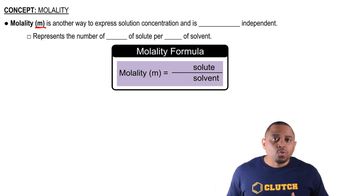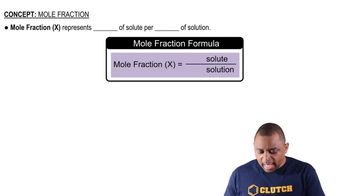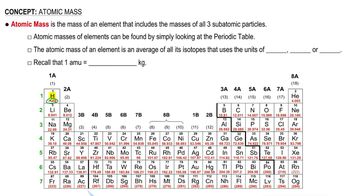Here are the essential concepts you must grasp in order to answer the question correctly.
Molality
Molality is a measure of the concentration of a solute in a solution, defined as the number of moles of solute per kilogram of solvent. It is expressed in units of moles per kilogram (mol/kg). Unlike molarity, which depends on the volume of the solution, molality is based on the mass of the solvent, making it particularly useful in situations where temperature changes may affect volume.
Recommended video:
Moles of Solute
The number of moles of solute is a fundamental concept in chemistry that quantifies the amount of a substance. One mole is defined as 6.022 x 10²³ particles (Avogadro's number) of that substance. To calculate molality, one must first determine the moles of solute present in the solution, which can be derived from the mass of the solute and its molar mass.
Recommended video:
Mass of Solvent
The mass of the solvent is crucial for calculating molality, as it serves as the denominator in the molality formula. It is important to measure the mass of the solvent in kilograms, as molality is defined per kilogram of solvent. This measurement is distinct from the total mass of the solution, which includes both solute and solvent, and is essential for accurate concentration calculations.
Recommended video:
 Verified step by step guidance
Verified step by step guidance

